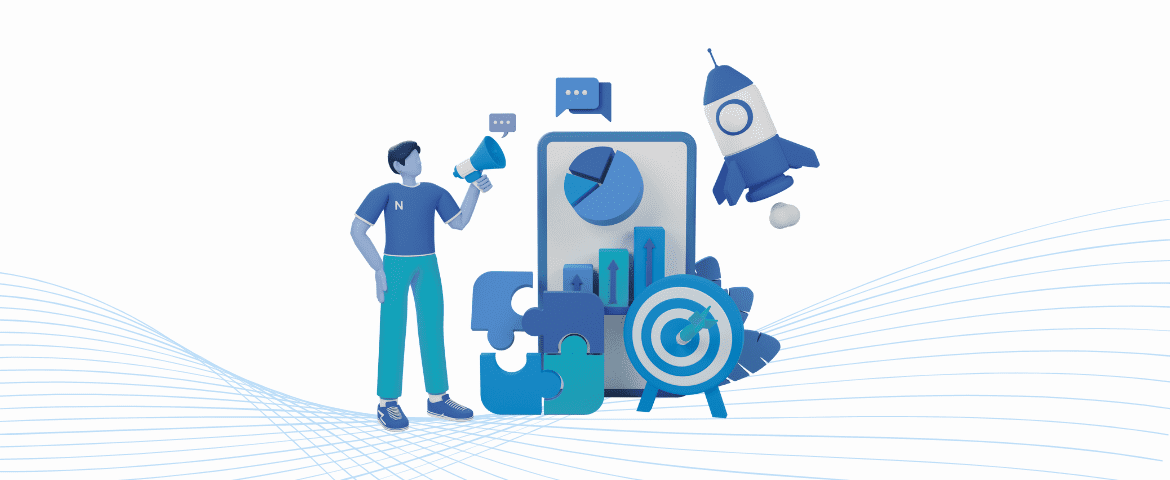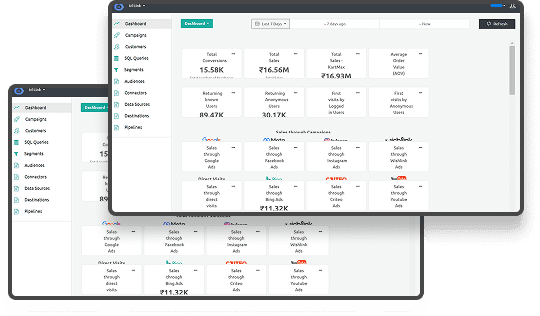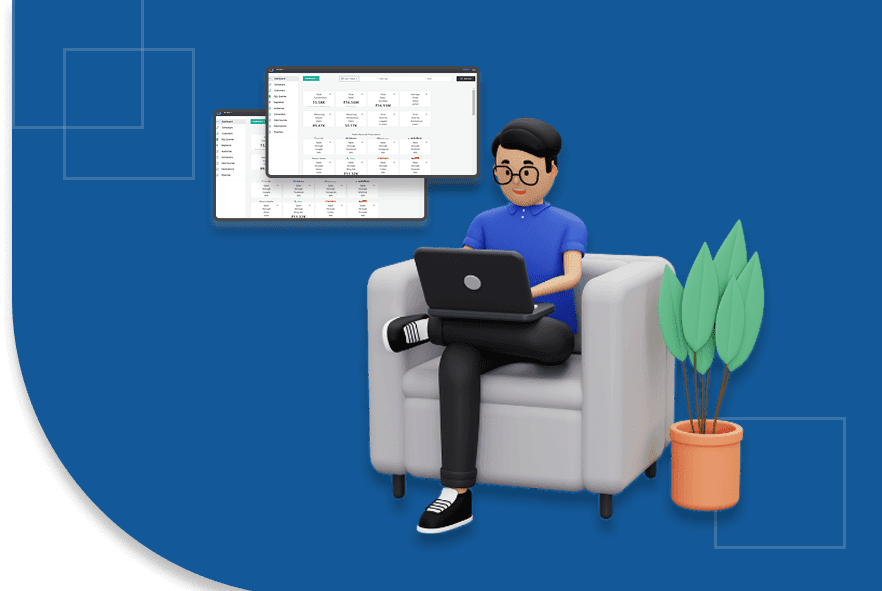How to Set Up a Customer Retargeting Campaign
Have you ever wondered why your website visitors often leave without completing a purchase or desired action?
Many businesses face this challenge when aiming to convert site traffic into loyal customers. In fact, statistics reveal that a significant portion of visitors abandon their shopping carts, with rates varying across industries. An average cart abandonment rate of 70.1%. These figures underscore the importance of implementing effective strategies to re-engage potential customers and encourage them to return and complete their transactions.
One such strategy is retargeting, which involves displaying personalized ads to users who have previously interacted with your website but did not convert. By reminding these visitors of your products or services, you can increase the likelihood of them returning to finalize their purchase. This approach has proven to be highly effective in boosting conversion rates and maximizing return on investment (ROI).
TL;DR
- What is Retargeting? A strategy that shows personalized ads to users who visited but didn’t convert, encouraging them to return and complete a purchase.
- Why Retargeting Works: It drives higher conversion rates, reduces wasted ad spend, increases ROI, and keeps your brand top-of-mind for potential customers.
- How to Set It Up: Define campaign goals, install tracking pixels, create custom audiences, design personalized ads, choose the right platform, and monitor performance for optimization.
- Common Pitfalls: Avoid over-targeting, neglecting mobile users, poor audience segmentation, and failing to track and adjust your campaign’s performance regularly.
What is Customer Retargeting?
Customer retargeting is a form of online advertising that targets users who have previously interacted with your brand but didn’t convert. This could mean people who abandoned their shopping carts, visited specific pages, or engaged with your social media ads but didn't complete a purchase.
Unlike traditional ads that target a broad audience, retargeting is highly focused. It shows your ads to people who have already expressed interest in your products or services. This makes retargeting a highly effective way to increase conversions because you’re focusing on an already familiar audience with your brand.
Next, let’s break down how retargeting campaigns work and the process that leads to success.
How Do Retargeting Campaigns Work?
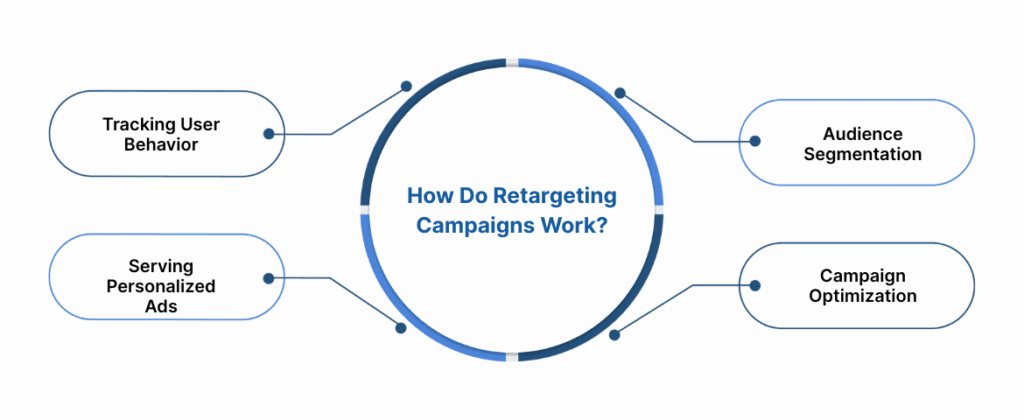
Retargeting campaigns show ads to users who have previously interacted with your brand but did not complete a desired action, such as purchasing. Here’s how the process works:
- Tracking User Behavior: A tracking pixel (such as Facebook Pixel or Google Ads Remarketing Tag) collects data when users visit your site, monitoring actions like page views or cart additions.
- Audience Segmentation: Based on the tracked data, you segment users into cart abandoners, page visitors, or high-engagement users. This allows you to serve more personalized ads to each group.
- Serving Personalized Ads: Retargeting ads are shown to users across various platforms (like Facebook, Google, or other websites). They feature the products or pages they interacted with, encouraging them to return and convert.
- Campaign Optimization: You monitor key metrics (CTR, conversion rates, frequency) to optimize your campaign by refining your ads and targeting, ensuring higher engagement and conversions.
Ingest Labs’ tools, like Ingest ID and Event IQ, help improve this process by providing accurate tracking and deeper insights into customer behavior, making your retargeting efforts more effective.
Next, we’ll examine the key benefits of retargeting and how this strategy can transform your business.
Read: Guide to Effective Ads Tracking
Benefits of Retargeting
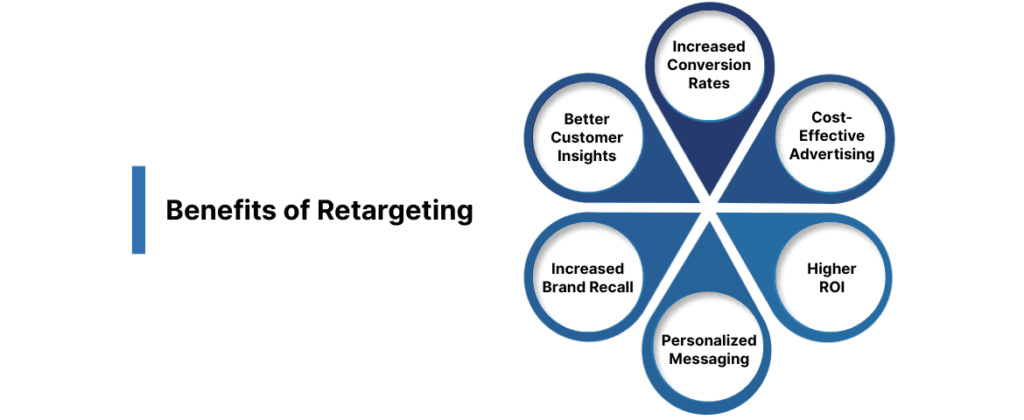
Retargeting isn’t just about reaching out to your audience again; it’s about strategically engaging with potential customers to improve conversion rates. Here are some key benefits of using retargeting in your digital marketing efforts:
1. Increased Conversion Rates
The primary benefit of retargeting is that it brings back potential customers who are already familiar with your brand, significantly increasing the likelihood of them converting. Studies show that retargeted customers are more likely to purchase than first-time visitors, making retargeting a critical strategy for improving conversion rates.
2. Cost-Effective Advertising
Retargeting allows you to use your advertising budget more efficiently by targeting only people who have already shown interest. By focusing your resources on high-potential leads, retargeting minimizes waste and ensures that your efforts are concentrated on the most valuable audience, driving better results.
3. Higher ROI
Retargeting ads focus on users who have already interacted with your brand, which typically leads to a higher return on investment. Customers who have previously visited your website are much more likely to convert compared to cold leads, making retargeting an innovative and cost-effective way to maximize your advertising ROI.
4. Personalized Messaging
With retargeting, you can tailor your ad messages to suit the specific needs of each potential customer. For example, if a customer abandoned their cart, you can show them ads featuring the exact products they left behind, reminding them to complete their purchase and encouraging them to return.
5. Increased Brand Recall
Retargeting keeps your brand at the forefront of your audience’s mind by constantly reminding them of your products or services. By showing your ads to users who have interacted with your website before, you create a sense of familiarity, which can influence their decision-making when they’re ready to purchase.
6. Better Customer Insights
Running a retargeting campaign provides valuable insights into your audience’s behavior and preferences. By analyzing the performance of your ads, you can gain a deeper understanding of what resonates with your customers, allowing you to refine your future campaigns and target them more effectively.
By using retargeting, businesses can keep their brand top-of-mind, increasing the chances of returning customers. Now, let’s move on to setting up your retargeting campaign.
Steps to Set Up a Retargeting Campaign
To successfully set up a retargeting campaign, you'll need to follow a series of steps to ensure your ads reach the right audience and achieve your marketing goals. Here's a breakdown of the process:
1. Define Your Goals and Target Audience
Start by identifying your retargeting campaign's goals. Is your goal to drive sales, boost brand awareness, or encourage specific actions (like sign-ups or downloads)?
Once you have clear objectives, determine who your target audience is. Consider which segments of your website visitors you want to retarget, such as:
- Cart abandoners
- Product page viewers
- Visitors who spent time on your site but didn't convert
2. Install a Pixel or Tag
A pixel or tag is a small code you place on your website to track user activity. This helps you gather data on visitors and their interactions with your site.
- Where to Install: You can install a pixel or tag, such as Facebook Pixel or Google Ads Tag, directly using the Ingest Labs Tag Manager. Place it in your website’s header or manage it seamlessly for tracking actions like page views, product views, and cart additions.
3. Create Custom Audiences
Use the data collected by the pixel/tag to create custom audiences. Segment your website visitors based on their behaviors, such as:
- Visitors who viewed specific products
- Users who added items to their cart but didn't purchase
- People who visited particular pages (e.g., blog posts, pricing pages)
By creating these audiences, you can show tailored ads that are more likely to resonate with users' past interactions on your site.
4. Design Your Ads
Now, design ads that speak to your audience’s previous actions. Make sure your ads are relevant, personalized, and contain clear calls to action (CTAs).
Consider:
- Personalized messaging based on the user’s past interactions (e.g., reminding them about a product they viewed or left in their cart).
- Engaging visuals that highlight the products or services they showed interest in.
- Strong CTAs to drive the user back to your site for conversion.
5. Choose Your Platform
Select the platform where you want to run your retargeting campaign. The most common options include:
- Facebook/Instagram Ads: Great for engaging with users across social media.
- Google Ads: Ideal for reaching users across websites in the Google Display Network (GDN) or using dynamic remarketing ads.
Choose the platform that best fits your audience’s behavior and campaign goals.
6. Set Your Budget and Bidding Strategy
Set a budget that aligns with your campaign objectives. Choose a bidding strategy that optimizes your desired outcome, such as cost-per-click (CPC) or cost-per-impression (CPM).
Your budget should reflect how much you're willing to spend on converting users and bringing them back to your site.
7. Track and Optimize Your Campaign
Monitoring your campaign performance is essential to achieving optimal results. Analytics tools like Google Analytics can be used to track click-through rates (CTR), conversion rates, and engagement levels.
- Optimize Your Campaign:
- Adjust your ads, targeting, and bidding strategies based on your collected data.
- A/B test different ad creatives and audiences to determine what works best.
- Keep refining your strategy for maximum ROI.
8. Retargeting Platforms and Options
Here are two popular platforms for retargeting:
- Facebook: Facebook allows you to retarget users who visit your website or interact with your page. You can create custom audiences based on actions such as:
- Product views
- Cart abandonment
- Engagement with specific posts or pages
- Google Ads: Google Ads provides a robust retargeting feature that lets you reach users who visited your website. You can use dynamic remarketing to show personalized ads for the exact products or services they viewed, increasing the likelihood of conversion.
By following these steps and utilizing the right tools and platforms, you can set up an effective retargeting campaign that brings back visitors and maximizes your conversion potential. With this, you can scale your campaign and improve your results. But before you dive in, let’s look at some common mistakes to avoid in retargeting campaigns.
Read: Understanding Basics of Paid Media Campaigns with Examples
Common Mistakes to Avoid in Retargeting Campaigns
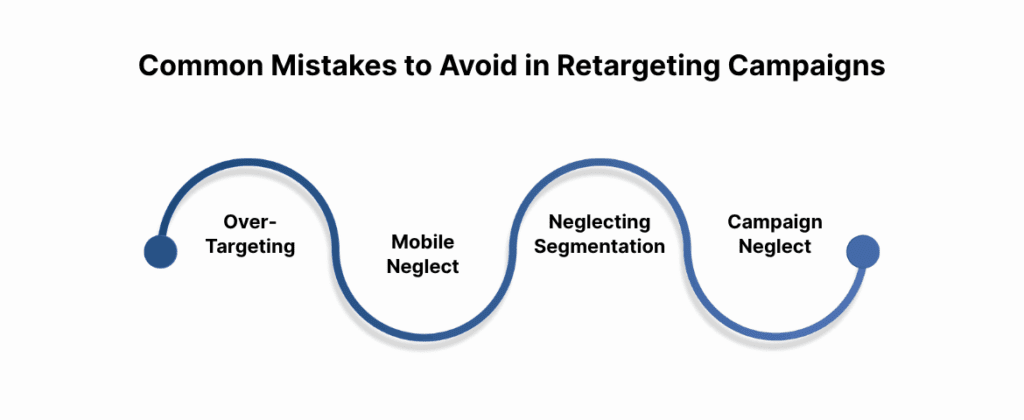
When running a retargeting campaign, several common pitfalls can hinder your success. Avoiding these mistakes is essential for improving your campaign's effectiveness and ensuring you get the most out of your advertising budget. Here's how to steer clear of those mistakes:
1. Over-Targeting
Showing too many ads to the same audience can lead to ad fatigue, where users become overwhelmed and start ignoring or dismissing your ads. This is a common problem that can reduce the effectiveness of your campaign.
To avoid this, you can use Ingest IQ to precisely track customer behavior, ensuring that your audience is engaged at the right frequency. Analyzing user interactions in real time allows you to optimize how often ads are shown, preventing overexposure while maintaining strong engagement.
2. Neglecting Mobile Optimization
Many users will interact with your retargeting ads on mobile devices. If your ads aren’t mobile-optimized, you risk delivering a poor experience, such as slow load times or distorted images, which can negatively affect your conversion rates.
With Ingest IQ, you gain comprehensive insights across web and mobile platforms, allowing you to track how users interact with your content. This data helps you ensure your ads are optimized for mobile devices, providing a smooth and engaging user experience that drives higher conversion rates.
3. Ignoring Audience Segmentation
If you fail to segment your audience correctly, you risk showing irrelevant ads to users, which decreases the effectiveness of your campaign and may result in wasted ad spend. Proper segmentation ensures your ads are tailored to user behaviors and interests.
Ingest ID helps you collect and track first-party data, enabling precise segmentation based on user actions such as product views, cart abandonment, or time spent on your site. This lets you target your ads to the most relevant audience, ensuring your retargeting efforts are highly personalized and effective.
4. Not Monitoring and Adjusting Campaigns
After launching your retargeting campaign, monitoring and adjusting it continuously is essential. Failing to track performance and make necessary adjustments can lead to stagnant or underperforming campaigns, costing you time and money.
With Event IQ, you can track real-time customer behavior across multiple platforms, providing valuable insights into your campaigns' performance. This allows you to tweak your ad creatives, targeting, and bidding strategies as needed, ensuring your retargeting campaign remains optimized and aligned with your goals.
Final Thoughts
Retargeting campaigns are a powerful strategy for returning visitors who have interacted with your website but didn't convert. By tracking user behavior, segmenting your audience, and serving personalized ads, businesses can boost conversion rates and maximize return on investment (ROI).
With Ingest Labs, you can improve your retargeting campaigns by using advanced tools for accurate data tracking and audience segmentation. Ingest IQ provides real-time insights, Ingest ID helps with precise audience segmentation, and Event IQ works on optimizing campaign performance across different platforms. These tools make retargeting more effective and personal, ensuring your efforts are focused and impactful.
Ready to optimize your retargeting campaigns and drive better results? Contact Ingest Labs today to improve your data-driven marketing strategy and achieve higher conversions!



